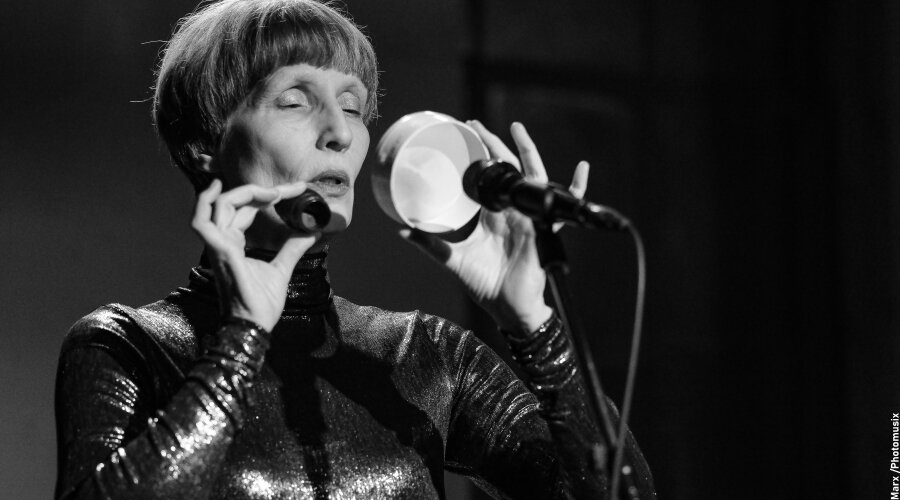Ute Wassermann´s otherworldly singing transcends the human voice, resulting in multidimensional, sculptural sounds that oscillate between electronic, animalistic, inorganic and human qualities. Frenzied trills, yodelling, laryngeal drones, polyphonic screams—to name just a few examples—Ute Wassermann's singing comprises different vocal identities that are always interconnected by overlapping, complementing, contradiction and proliferation. In the process, her voice is transformed into many hybrid creatures through the use of bird whistles, membranes, and percussion objects. She pushes this to the extreme by creating a visceral sound space with different types of microphones. Some of these bird whistles hold a memory of now-extinct species. The voice still sounds in the pipe, even if the bird is now extinct. The singer enters into various relationships—with the object ‘bird whistle’, with the past and the present, with actual birdsong, and with her own voice in relation to it.
The core of her work is genuine experimentation. She invents concepts and then expands, alters, or destroys them in the creative process on stage.
She enjoys transforming accidents and coincidences with an acrobatic virtuosity akin to that of a circus artist, combining controlled and uncontrollable processes until they become indistinguishable. With each performance of chimera, she renegotiates the relationship between composition and improvisation.
Her voice is a hybrid, a chimera, a cyborg. The boundary between self and environment becomes fluid, so that the latter itself becomes an illusion in favour of a more complex reality. The binaries of animal and human, object and human, nature and technology are turned upside down in favour of interwoven relationships based on reciprocity.














